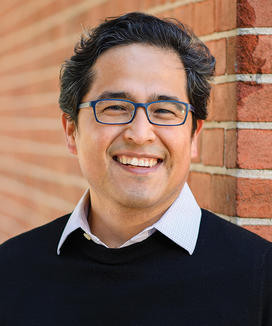Human-Computer Interaction Lab Tackles the Gig Economy
Building technology that works for workers in the gig economy — as well as consumers

Andrés Monroy-Hernández grew up in Mexico, in an activist family. His parents moved to the north of Mexico where they were part of an organization trying to help workers create unions in Mexico for workers at U.S. car factories that had just moved across the border. He carried that drive with him as he studied human computer interaction and became a researcher at Microsoft and Snap Inc. for a decade.
Monroy-Hernández started to notice that platforms such as Uber, Lyft, and DoorDash were smooth for consumers but harmful for the workers who labored within them. He wondered: Was it possible to build technologies that worked for both sides? “Part of my background and growing up in a union-friendly home probably influenced this,” he says. That desire to help make the world better led him to Princeton to found the HCI (Human-Computer Interaction) Lab, where he focuses on social computing and building public interest platforms — tech that can serve the greater good of society.
One prong of the lab’s research tries to understand what current workers in the platform economy are experiencing and works with labor organizations to offer them better data. The researchers use tools, like one they have built called FairFare, to collect crowdsourced data from drivers. That helps them peer inside the black-box algorithms that companies employ to guide pricing information. Drivers can easily and anonymously link their job data to analyze average fare breakdowns, and the researchers offer that information back to unions and worker collectives.
This data has led to other research questions, such as understanding the take rate — the rate the company takes from a driver — and how it changes in different circumstances. The team’s research has revealed that in some cases, a driver can receive less than half the fare paid by customers; in one case, Uber collected as much as 53%. They have also found that the take rate is higher near airports.
The lab is sending students to interview drivers on various platforms to understand their day-to-day lives, struggles, and how they work within the confines of each platform. Researchers have learned the lack of transparency is one of the most jarring aspects of being a worker. “Not just the issues around not only integrity, but also things around like how tasks are assigned, or how the pricing works,” says Monroy-Hernández. “A lot of them know people who have been kicked out of these platforms and it’s unclear why that happens.”
Another arm of the lab’s research imagines a better future: creating alternatives to the existing platforms that could be owned and operated by the drivers themselves. In some places, driver-owned options exist, but consumers and drivers may not know about them. The lab is building an app that will open the nearest local driver-owned option — something Monroy-Hernández equates to buying locally from a farmer’s market instead of going to Walmart. “My hope is that as we develop these alternative, decentralized platforms,” he says, “consumers can make choices to support locally owned and operated food delivery systems or rideshare systems rather than the mainstream ones.”
Monroy-Hernández adds that consumers can build awareness in other ways too — simply by talking to their drivers. He often shares back with drivers the amount he paid and asks how much of that they received.
The gigification of the economy is growing, and workers are increasingly being managed by algorithms — from drivers to lawyers and doctors on demand — which makes the research critical. “My hope is that we can think about a better future and how technology can be empowering rather than harmful for communities,” Monroy-Hernández says. “Here at Princeton, there is a lot of excitement about how we can build technologies that are beneficial for society.”











No responses yet